|
|
|
| William
Frederick
II |
|
|
|

|
|
|
|
Welcome to the Future…. |
|
”
Welcome to the oceans in a labeled can,
Welcome to the dehydrated lands,
Welcome to the self police parade,
Welcome to the neo-golden age,
Welcome to the days you've made
You are welcome”
(lyrics by Robert Calvert; music by Hawkwind)
Never were there more prophetic
words uttered by a rock band. In the past we have had Three Mile
Island, Chernobyl, The Exxon Valdez, Bhopal and other
nightmarish events too heart-breaking and numerous to mention.
That is, in addition to the never-ending tally of dead from wars
profitable only to amoral corporations and greedy bankers. Now,
in addition to this tally of destruction and suffering, we have
the ocean-killing oil spill in the Gulf of Mexico. Many of us
around the world have watched in anger and disbelief as millions
in litres of crude oil have poured forth and polluted one of the
world’s prime fishing areas. Who needs comets, earthquakes,
solar flares or even mighty Cthulu when we humans are so adept
and prolific at destruction?
Our apocalyptic ability to destroy ourselves and all other life on this
planet has provided the despairing inspiration for artists’
creativity throughout the ages. Therefore it is not surprising
that those fellow travellers in the lands of progressive rock
have too been inspired by our species’ insipid drive to destroy
all and sundry, preferably before afternoon tea (“fika” for our
Swedish brothers and sisters). So, in keeping with our
despairing present, here are some prog nuggets for everyone to
enjoy while they bathe in radiation, choke on fumes, gargle with
sweet crude oil and marvel at the wonderful new twists in our
goo-ridden gene pool.
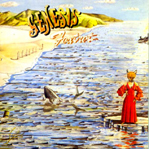
First choice? An obvious one: “Supper’s Ready” by Genesis. Although this
long-ish ditty was written in 1972, it is just as relevant today
as in the days of Cold War paranoia. Peter Gabriel sings, with a
voice both whimsical and solemn, crooning lyrics which meditate
upon both personal and worldwide apocalypse. Kinda like Lewis
Carroll meets Dr. Strangelove, if you will. The band members all
have their musical parts to play in this science fiction
fairytale and they do so, wonderfully. Steve Hackett whirrs
about in the garden, covered in noxious pollen. Tony Banks gets
all sorts of stately in the manor music room, while being
exposed to toxic mould. Peter Gabriel toots on his flute out by
the reflecting pool, enjoying the diminishing ozone layer.
Meanwhile, the rhythm section of Mike Rutherford and Phil
Collins try very much not to get freaked-out by the lovely
paranoia of it all….not to mention the tactical nuke brooding in
the basement catacombs. Throughout the 23-minute track the
audience is metaphorically guided through a world ever on the
edge of imminent dissolution with some of the most melodic and
epic music that Genesis ever produced. Of course, there are
still those ‘mighty dragons under the sea’ to consider….
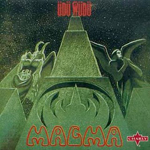
Second choice: “De Futura” by Magma. When choosing a suitably dark and
ominous track by Magma one is confronted by the realisation that
there are so very many. In fact, it could be said that a good
chunk of their catalogue is dominated by weighty
prognostications concerning the human race’s inability to live
with each other or the planet, in any sort of harmony. Magma
catalogues human frailties in their mythic tales with a language
of their own creation: Kobaian. Luckily, between interviews and
liner notes the serious Magma student can piece together the
story behind Christian Vander’s musical cycle….if one has the
time and imagination. But instead of being programmatic I have
decided to just go by impact and mood, hence my choice of “De
Futura”….and what a mood it is. The track begins briefly with an
involuted, almost Robert Fripp-ish guitar (or synthesiser)
intro. After that, imagine if you will, a wailing synthesiser
line straight out of some H. P. Lovecraft encounter with a
decidedly slimey and ill-tempered, multi-dimensional hellspawn.
Then for vocal reinforcement, add guttural chantings from a
worshipper of the same hellspawn. Underpin all this with a
relentlessly repetitive and angular jazz-funk rhythm; drums plod
and smack, while the bass pounds a fuzzily distorted set of
notes into your skull. AND the crazy synthesiser keeps wailing
and wailing, while that mad priest of Cthulu keeps chanting. For
almost eighteen minutes it goes on like this; welcome to ZEUHL
everyone! Eventually, there is a sort of crescendo and just a
bit of mumbling from the priest which slowly fades. C’est fini.
I do not know about anyone else, but for me this track is
thrilling and creepy at the same time. The whole thing sounds
like Nostradamus trying to do the backstroke in some tortured
and poisonous sea, while Leviathan lurks menacingly and hungrily
beneath.
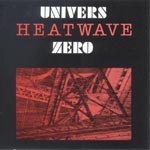
Next on our list of music for toxicology: more Zeuhl. Only this time it
is one of Magma’s acolytes: Univers Zero. Our chosen music: “The
Funeral Plain” from the album HEATWAVE. Univers Zero originally
sounded like a Bartok string quartet with jazz drumming. But by
the time they recorded “The Funeral Plain” keyboards began to
become more prominent and some of the more overtly classical
elements were fading. With “The Funeral Plain” Univers Zero
embraced the music of desolation; a sound world choked by
radioactive ash and blackened sand where life is but a shabby
memory. Still, there are plenty of classically-influenced
moments, especially in the opening section. There is also some
wonderfully strangled electric guitar soloing from Michel Delory
that just adds so much to the tormented atmosphere. Visually
speaking, “The Funeral Plain” would make the perfect soundtrack
for “The Second Renaissance” from the ANIMATRIX dvd; it is that
relentless. Univers Zero have produced with this track some of
the best music since their second album, HERESIE (a black
masterpiece). In some ways, Univers Zero truly encompasses the
best that progressive rock can aspire to: complexity and passion
in pursuit of stimulating musical art.
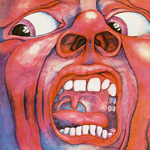
For our finale the only choice is “Epitaph” by King Crimson. An obvious
choice I know, but it fully encapsulates feelings of
powerlessness and grief for our present world situation. It is a
song filled with mellotron swells, Ian McDonald’s woodwinds,
acoustic guitar Fripperies, Michael Giles’ stately drums, Greg
Lake’s soberly dramatic vocals and some of Pete Sinfield’s most
directly heartfelt lyrics. Reminds one of a stately elegy for
those broken dreams we all had in our youth for a beautiful and
better future, now gone all barren and gray. “I fear tomorrow I
will be crying” indeed!
The aforementioned tracks will provide any prog lover a suitable
soundtrack with which to inspire them to do something, anything
now. Just remember how absolutely untrustworthy corporations and
governments are in these insane times, then get angry and make
your opinion heard. And without a doubt there is much more
proggy music to be discovered besides my few suggestions. For
those still curious and wanting more, try Aphrodite’s Child
(666), Art Zoyd, Eloy (PLANETS), Peter Frohmader, Halloween (LAZ),
Hawkwind, Heldon, Necropolis, PLJ Band (ARMAGEDDON), Present,
Runaway Totem, Shub Niggurath, Universal Totem Orchestra and Van
Der Graaf Generator. This is in addition to even more King
Crimson, Magma and Univers Zero….but perhaps not so much Genesis
(too well-adjusted?).
As a final non-prog recommendation, but still in keeping with all the
previously mentioned bleakness, I would like to suggest giving
the band Dark Buddha Rising from Finland an hour or two of your
listening time. These dark magi create droning doom of the
highest calibre, with hints of psych just to make it that much
more crushingly transformative. This is the sound of oil being
compressed by millions of litres of polluted seawater and turned
into evil psycho-metallic goo by the chilling depths. Their
sound contains oily allusions to Earth (second and third
albums), Hyatari, Moss and Sunn o))), along with vague
intimations of Black Sabbath….if one must have reference points.
But it is more accurate just to say that they exist in a dark
universe totally of their own blasted creation. Supposedly
associated with the stoner outfit Galacticka, this band has
three releases that I know of and all are on (sweet irony)
vinyl. The release closest to my heart, and the first one I
heard, is the double lp RITUAL IX (2008). It is a droning
masterpiece infusing just enough vocals to give the syrupy
blackness some sort of (submerged) human element. Never was
there a better album of crawling and sludgey doom. Not really
much information to be had about this band….their internet
presence is refreshingly minimal. Their website (http://www.varjotila.org/dbr/)
contains only an oblique manifesto, titles of their three
releases and a contact address in Finland. It might take a bit
of work, but I think the reward of hearing such evocatively
doomy music is well worth it. AND it fits in quite well with
these times of disaster and sprawling anxiety in which we find
ourselves.
Remember: we cannot allow those whose only interests are power
and profit to dominate our world culture any longer….all life
depends upon it.
|
|
|
William`s Floydian ruminations
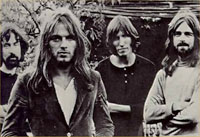 |
|
|
|
Hulloo fellow proggies! How was your summer? Was it a lolling
stroll through sunshine ecstasies, some cider and smoke-choked
beachside barbecue or perhaps a dreary slog through sweaty pubs
and football fantasias? Personally, mine was an angst-ridden
drive to conclude the Frankenstein-like nightmare of my D-level
essay by mid-August and complete two smaller projects before the
start of my autumn classes at university. AND move from the only
home I have known here in Sweden, a cherished but small student
apartment, to a slightly (five meters) larger apartment on the
other side of Göteborg. The previously mentioned slowly-birthed
and nightmarish essay (on Thomas Ligotti, a writer of darkly
existential prose) was sound-tracked by dark, doom-mongering and
drone-ilicious musics of Ancestors, Darsombra, Earth, Fungoid
Stream, Moss, Nadja, Ocean Chief, Sleep, Sunn O))), Trancelike
Void, Uncertainty Principle, and Until Death Overtakes Me
(anything with Stijn Von Cauter is worthy of praise)….with a
sprinkling of black metal (e.g., Nortt, Trist, etc.) for even
more hope-crushing ambience. Earth and Sunn O))) in particular
were alternately inspiring and devastating with layer upon layer
of blackened droning sound [both bands also cause noisy
neighbours to go strangely mute]. BUT there was still another
band which got me through all the depression and horrors: PINK
FLOYD.
Like many people, I am a Pink Floyd (AND Syd Barrett) fan…….even
if The Final Cut and Division Bell are sickening reminders that
even great musicians can get things totally WRONG. My love for
the Pink Floyd ‘sound’ is so massive that over the years I have
sought out almost any band that even remotely sounded like them
or even claimed a Floydian influence. A magnificently
intractable obsession leading to a variety of purchases ranging
from Tangerine Dream (listen to Alpha Centauri, Atem or the
“Ultima Thule” single for evidence) to Robyn Hitchcock (a
purveyor of witty Barrett-isms), from Spacious Mind (the Swedish
masters of spacey psych) to Rain Parade (some of the best dreamy
psych-pop ever), to the further out (AMM or Musica Elettronica
Viva anyone?) and obscure (Pyramid). Oblique references in a
couple of magazine reviews even steered me into the realms of
goth-ish darkwave (the Siouxsie-esque dream of an album, Diary
of a Drunken Sun, by Opium Den) and delectable indie drone (the
transcendentally wonderful Windy & Carl….buy everything you can
find by them!). The never-ending quest even landed me in
[apologies for the exceedingly bad pun] a Porcupine Tree (Sky
Moves Sideways being their most PFloyd-ian album, but every
PTree album has a nod or two in the Floydian direction).
Needless to say, the influence of the Floyd’s music is quite
wide indeed.
Problem is that few if any bands actually capture that Floydian
balance between stoned ambience and blues-based rock….not even
the mightily kosmische Ash Ra Tempel/Cosmic Jokers….and this is
a problem and a joy. The problem being that Pink Floyd seems to
be pretty much a quiet recording and touring entity (R. I. P.,
dear Rick Wright….in some ways, the musical soul of Floyd), so
we their fans must look elsewhere for our Floyd fix or be
satisfied with re-masters and reissues (let’s not mention the
incredibly irrelevant and environment-defiling cash-in
compilations). I mean, who or what is there that can scale the
paisley heights of Piper at the Gates of Dawn, exceed the
luminous magnificence of Meddle or reach beyond the rapturously
slick emotional bombast of The Wall? Not anyone that my diseased
and debauched brain can think of at this moment in time. Can
you? Honestly?
Ah,
but if such questions befuddle us with their geeky,
mind-mulching problematics there still is joy upon joy to be
experienced in the Floydian universe….and a strange, yet
comforting universe it is. Firstly, there is the smoke-choked
and overly-ambitious Ummagumma, which is to my mind almost as
brilliant as anything to come out of Germany circa 1968-1975
(and we all know how many truly AMAZING albums came out of
Deutschland during that period). Next-ly, there is the fact that
to this day I have heard at least twenty versions of Pink
Floyd’s most magnificently spacious statement, “Echoes”. Each
version of that 23-minute opus is different but nonetheless
still partaking of the godly energy heard in the studio version
upon the mighty Meddle (my favourite Floyd album, if you must
know). The late-night cynical languor of “Dogs”, incantatory
psychedelic bliss of “Set the Controls for the Heart of the
Sun”, and proto-metal of “The Nile Song” all still give me
thrills to this very day too, without fail. One must be a truly
sorry sort indeed not to be able to find at least something to
love and cherish by Pink Floyd.
Next time, I promise, there will be a more ‘normal’
review….perhaps venturing into French Floydian realms (imagine
that!). Partial credit for all this ranting must go to my cousin
Jeff, as it was our email conversation of a couple months ago
concerning Pink Floyd and family that provided the impetus for
these computerised scribblings. Credit him, blame me. And listen
to PINK FLOYD!
|
|
|
Under a Mushroom; Eloy and Rush 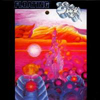
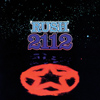
|
|
|
|
One might get the fleeting impression while wandering
the internet that there might actually be a stoner rock revival
oozing about in various parts of the world (it is in my
debauched, decadent and diseased imagination). Or, it could be
the way everyone seems to be accelerating into the summer season;
hanging out by lakes or wandering in the forests, getting
blonked on Nature and whatever turns your head into gloop (for
me it’s caffeine, sugar, and artificial colouring….with a
pinch of salt or chili sauce, depending upon the mood). Whatever
the reason, a righteous vibe is causing many a folk to
rediscover the smoky joys of Black Sabbath and Kyuss, along with
a brain-frying load of other traffickers in arcane,
cloud-distorted realities [go online and find the trailer to the
documentary Such Hawks, Such Hounds]. Interesting thing is that
at least some of these bands have also picked up on certain
proggish and psychedelic aspects, imagined or otherwise,
obsessively found in Sabbath, Zep and Floyd. Not to mention
Hawkwind’s (and a few Germans) peaking and plotting of oblique
spatial relationships. Listening to groups such as 35007, Black
Mountain (especially the extended version of “Druganaut”
found on an ep of the same name), Datura (sadly gone), Dead
Meadow, Earthless, Mammatus, My Sleeping Karma, Ten East, and
Titan can certainly bring about a dizzying sense of déjà vu……..or
flashbacks. All of the aforementioned bands are really great,
but they are just the tip of the iceberg….check out Myspace
and other places on the internet for even more underground bands
deserving of attention (e.g., Gran Cuervo, Husky, Lento, Llange,
Mothertrucker, etc.). Of course y’all know there are OLDER
bands that came after SabbathZepFloyd who are almost as
justified and ancient. All are full of mystery and deserving of
a few words……..or more.
Two bands that require such mention are Eloy and Rush.
Yes, you saw the words right, “Eloy” and “Rush”. By this
time, there are some neo-mullets in the back yelling “But they
ain’t STONED enough!” or “Their music is all Prog Wank!”
Not so, my impatient stoner brethren. There is much cloud-tastic
goodness to be found in the musics (and albums) of Eloy and
Rush! Y’all just got to look in the right(eous) places. So get
comfortable….and put on your drug helmet of choice….this is
gonna get hairy.
Both Eloy and Rush started as hard rock-influenced
bands (and to some extent still are). Eloy began with an obvious
debt to Deep Purple and Uriah Heep (maybe some Wishbone Ash too….maybe).
Rush had some serious Cream and Zeppelin-riffage adoration going
on, in their early stages. Kinda like if Captain Beyond got
heavier. Both bands also possessed a budding interest in
storytelling of a most fantastical and science fictional sort,
in addition to their bell-bottoms and oriental rugs
(later….kimonos and robes). The first couple albums by each
group contain some really good songs, but generally are lacking
in any real personality….unless almost bog-standard hard rock
is personality enough for you. Then, something truly magickal
happened (imagine, imagine)….Eloy discovered Pink Floyd and
Rush discovered Yes….transforming them from obvious, hard rock
wannabes into purveyors of proggy and stoned rock; alchemically
transmuting lead (Led?) into gold. Or more simply put: Eloy and
Rush got really GOOD.
Now over the years I have occasionally participated in
or read many an argument concerning which are the best songs/albums
by Eloy and Rush….in addition to the never-ending
‘discussion’ addressing the question whether either band are
actually ‘prog’ or not. Difficult? Oh yeah, totally.
Plumbing the length and breadth of each group’s oeuvre is a
daunting task even for hardcore fans. But I am not a hardcore
fan of either band….so it is slightly easier for me. Each band
carries with it some major caveats. Eloy can seem overly
derivative of Pink Floyd (to the point where their album Silent
Cries & Mighty Echoes sounds like an almost blatant re-write
of Pink Floyd’s Wish You Were Here), the Alan Parson’s
Project, symphonic prog, and hard rock/metal (take a listen to
Metromania). Combine that with some of the cheesiest cosmic mush
masquerading as lyrics (listen to Dawn, Ocean, Planets or Ra)
and you have the ‘Eloy sound’. Rush take three great
musicians, then confine their magnificent abilities to the
production of mainstream arena-rock fodder (pretty much
everything after Hemispheres). Don’t forget Geddy’s dull
keyboard fills either. And we will not even discuss Neil
Peart’s questionable Ayn Rand obsessions. I mean, Ayn Rand is
the intellectual equivalent of Benito Mussolini in drag, with a
university degree….why did a smart guy like Neil Peart fall
for her ‘objectivist’ and patently elitist hogwash? Ah well,
chalk it up to bongloads of hormones and youthful inexperience.
And who hasn’t said a few things in their youth that they
mightily regret in later life? All is forgiven, Neal….except
those silk robes.
Let us now disregard all that bummer stuff and proceed
to the crème de la crème of each band’s output. First, allow
it to be said that both bands have had admirably long careers
and that each of their many albums have at least a couple good
songs. For most bands that would be more than good enough (or
close to impossible). Yet these two groups have each produced a
piece of music (calling them ‘songs’ seems disingenuous)
that is truly great. By “great” I mean you must absolutely
and under any conditions own them. Without hesitation.
Rush created an epic piece of music with the “2112”
suite; an amazingly balanced piece of science fiction meets
heavy prog. The story of the “2112” suite is ‘Golden
Age’ science fiction meets (yuck) Ayn Rand….or perhaps
Catcher in the Rye meets the Foundation Trilogy in a pothead’s
basement. It is refreshing for once to hear music and story
actually working together, neither trying to upstage the other.
The length (over twenty minutes) of the suite allows the story
to develop and involve the listener quite nicely. Personally, I
almost never get tired of hearing this magickal music….in fact,
it is my favorite single bit of music by Rush. The rest of the
2112 album sadly enough is not nearly as remarkable but the
“2112” suite is so eternally bodacious that one happily
endures the drippy bits that come after it. Lava lamps help a
lot too.
Eloy’s singular piece of transcendental yumminess is
also a bit long-ish (more than fourteen minutes), but more
mysterious. “The Light from Deep Darkness” from Eloy’s
album Floating is just so damn cool….a trippy musical hybrid
of Deep Purple/Uriah Heep with some Pink Floydian atmosphere.
The organ playing is marvelously un-flashy, totally reinforcing
the dark mood of the song and giving it spacious depth. The
lyrics are zonked and doomy…. reading as if the caterpillar
from Alice in Wonderland was lamenting the state of the universe
while gazing upon the wreckage of his beloved hookah (which the
Queen of Hearts smashed because the caterpillar preferred said
hookah to her sadistically boring garden parties). Cosmic angst
and perfectly balanced music combine to produce a real winner!
After this album Eloy would discover synths and ever larger ‘concepts’,
burying everything in symphonic muck and bandleader Frank
Bornemann’s ambition. Some of which was quite enjoyable, but
not nearly as soul-stirring as “The Light From Deep Darkness”.
This is not say that
neither band had some decent albums after 2112 or Floating,
it’s just that their creative spark began to slowly dim….instead
of burning brighter. One can dip into any of either band’s
output after 1976 and find much that will entertain; Eloy and
Rush are nothing if not reliable choices for good music. But for
me there is nothing really special, nothing to ignite one’s
emotional and imaginative passions. So go out and buy new copies
of 2112 and Floating (the remastered editions sound nice)! Spend
your time floating in mighty clouds of stoner joy. Because a
little magic in our lives is a wonderful thing, don’t you
think?
|
|
|
|
|
|
|
|
Steve
Tibbetts – Steve Tibbetts (1977) 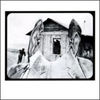
|
|
|
|
Originally,
I was going to write about 2112 by Rush and the absolutely
masterful (and magickal) title track. That album and song
trigger so many wonderful memories…….Michael Moorcock’s
The Dancers at the End of Time and a pipe full of too-moist
handmade black cherry tobacco……..autumnal oak trees ablaze
in daring colour……..a slow sunset fading, obliquely
signaling Winter’s impending arrival……..a long-light
afternoon of eternity aboard a slowly meandering canoe. Ah,
bliss upon bliss! Yet, if one listens to many too many
‘classics’ those dusty cobwebs start developing betwixt
one’s ears, causing severe hardening of the ear-holes and
brain. So the 2112 idea
was scrapped, for now (apologies to my dear friend, Ken). My
aged brain has been sloshing about in a sea of metal/hard rock
lately, so I next considered something by a new-ish band named
Titan, but all the beautiful Spring weather just did not seem to
go with their resinous stoner/psych/prog groove (well, it does
if the atmosphere is appropriately thick). Everyone was out
enjoying the new sunshine! Children were howling their joys at
just being alive, vibratingly young upon pollen-splashed streets.
Old people smiled for the first time since October. I felt like
writing about something that captures this mood, something of
the moment. Well…..what about some nice prog-folk? John
Fahey’s Yellow Princess, perhaps? Nope. Too baroque, too
claustrophobic and just not damn joyful enough (or so it seems
to my flower-befuddled brain, at this precise moment). Then
finally it came to me…….. something old yet obscure enough
to be new……..full of joy and trippy.
The album
immediately settled upon? The self-titled, first release by the
USA-born guitarist, Steve Tibbetts. This music is just amazing!
Imagine bits of Deuter’s Aum, sparingly combined with some of
the tape effects from Faust’s Faust Tapes, and occasional
analogue synth burbling from Agitation Free or early Tangerine
Dream. All the while, the ghost of John Fahey dribbles and mucks
about upon the couch. Then record the proceedings in the wilds
of St. Paul, Minnesota (summer/fall 1976). And BAM! You got one
album of truly trippy (but not dippy) music that sounds like it
was made yesterday, or over thirty years ago. Although good
chunks of the music’s influences are European, it all sounds
sooo very American. A little too produced to be truly lo-fi, but
certainly not anywhere near as glassy-slick as something
recorded at Abbey Road or Virgin’s Manor Studios. In fact,
this predates the contemporary “new American weird” or
“lo-fi rural psych” movements by at least twenty years (give
or take a bit).
Now folks
this album is not on the same bodacious kosmische level as
Sergius Golowin’s Lord Krishna von Goloka (a perfect album!)
or anything by Popol Vuh (a perfect band!), but it sort of hints
at it in a very American way. Perhaps more down-to-earth and
less “cosmic hippy”. A bonafide rural,
stoned-down-on-the-farm and woodsy trip. More mushroom gathering
than star-gazing, ya know? Anyway, Tibbetts shows himself to be
a fine guitarist, both on acoustic and electric implements. In
fact, the first five tracks are mostly acoustic, pastoral with
just enough subtle tape and electronics effects to keep the
music from falling into a twee cesspit of of folky effluvia.
Lovely AND sublime. Tracks 6 and 8 (7 is the acoustic “Interlude”)
get a bit more electronic, reminding you of some lo-fi Tangs or
Michael Garrison, with more restraint and taste. Pulse into a
dream of green. And while you blissfully recline in the grass
and sunshine, being oh-so-rurally spaced, good ole Steve creeps
up behind you on the final track (track 9) and saws yer
blissed-out head clean off, kicking it into the nearby
algae-mucky pond!
Yep, nothing
on the album really prepares you for “How Do You Like My
Buddha?” It is a combination/culmination of all the preceding
tracks, placed for maximum effect. This IS psychedelia!
Mind-warping and skull-buggering. This monster sounds like Faust
jamming with Herr Hendrix in a stoned-fug, several days old.
Meanwhile, Fahey’s ghost (remember him?) reluctantly lights
some incense and drools. The only problem? IT IS TOO DAMN SHORT!!
Stevie, why did you have to flip the off-switch on the engines
just when we were all achieving escape velocity?! Onwards toward
the green dream! Oh yeah. For those who suffer from aggravated
attention deficit issues it will be too fecking long at a mere
five minutes and seven seconds. But for those of us more finely
damaged, it truly is three stones from a blazing sun of
amplified kool. And as previously stated, this drugged blast
comes from absolutely nowhere. There are times when I wonder if
the MIGHTY Helios Creed (of the most perfect Chrome) ever heard
this track because it surely sounds like it could be a Chrome
outtake (minus the sloppy drums, sci-fi affected vocals and
urban-paranoid-acid-flashbacking).
Confession
time……..I have two copies of this wondrous album: an
original lp on Steve’s own (independent) Frammis label and a
cd reissued by the Cuneiform label (Maryland, USA). May I just
say that Cuneiform is one of the best record labels, ever? I
mean, how can you not love a label which puts out such amazing
stuff like Djam Karet (buy everything!), Peter Frohmader (buy
everything!), Heldon (BUY EVERYTHING!), Richard Pinhas (BUY
EVERYTHING!), Present (buy everything!) and Univers Zero (buy
every last thing!)! And the cds sound fantastic too, not like
some of those crappy vinyl-transfers that some labels do for a
quick dollar, euro or krona……..which actually sound worse (compression
and all sorts of digital rot) on cd! So go and buy two copies of
Steve Tibbetts first album AND his second album, Yr (which is
nearly as major colossal good as his first; better according to
dear Ken)…….then go lay in the shade of a giant oak, have a
grilled mushroom sandwich, while thanking Odin and the rest of
the Aesir/Vanir for such a beautiful Spring. Keep all those
ghosts happy!
|
|
|
|
A Musical Imagination / Harmonia - Live 1974
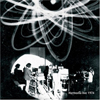
|
|
|
|
Alright folks, we all know that music is an act of imagination; IMAGINATION given power by EMOTION. The attendant visions are sustained by an underlying act of imagino-emotional synthesis and the most RIGHTEOUS of these visions are those partaking of BALANCE. Don’t believe me brothers and sisters? Well, I refer you to the BOOK OF COPE (also known as Krautrocksampler), if you disbelieve. And a shame most profound be upon you if the bathroom cathedral or library of holies in your humble abode does not contain at least one well-thumbed
copy.
Did you enjoy that bit of preamble? Or did it make you reach for Black Flag and Merzbow cds so that you might blast all that hippy shite from your munged-up brain forever? Hopefully, you will have started humming “Der Weisse Alm” while rolling merrily about in the fresh, spring grass (with a friend, if possible). This writer apologises most profusely for any undue stress or traumatic suffering, dear reader. My point is: most all of us are active and imaginative participants when listening to music (well, at least those of us who are not still deaf and blind from the burning wreckage of Melodifestivalen).
Now some of my favorite flights of fancy involve German experimental rock music or “krautrock” from 1968 to 1975. Along with the paintings/artwork of Philippe Caza, Roger Dean, Philippe Druillet, Chris Foss, Jean Giraud, H. R. Giger, Rodney Matthews, and Patrick Woodroffe (just Google them, you’ll understand), “krautrock” furnishes one of the larger ballrooms in my castle of imagination. Ah! Such wonderful sounds, such haunting images (and the occasional ripple of demented laughter)! Many a happy hour has been passed in blissful contemplation of those visions that result from the synergistic effects of listening to the mighty goddesses and gods of “krautrock”. And I plan on sharing one of them with you now….and more in future articles….prepare yourself. This will be your only
warning.
So what does Harmonia’s Live 1974 persuade one’s tortured brain to imagine? Well, for me it is the oddest of visions (surprise, surprise). Imagine a hulking Chris Foss-esque spacecraft, creeping on its oily way through the infinite void, piloted by cutely weird creatures from the pages of Patrick Woodroffe’s Mythopoeikon. Those cutesy-creepy creatures are ‘dancing’ alien polkas, demented waltzes, and druggy bops upon the spacecraft’s bridge whilst their captain nods in silent approval. And what is the music to which they all ‘dance’? A strangely hypnotic brew of early Stockhausen or Xenakis electronic works, combined with a drum machine the cute little aliens stole from Arthur Brown in 1973 and sounds of a distorted guitar thrown down slimy gelatin stairs. Meanwhile in the spacecraft’s psychedroolic pub, the ghost of Brian Eno (wrapped in neon peacock feathers) wiggles his bum to the music of Zuckerzeit while chatting-up a drunk and suspicious Venusian mollusk on wanderjahr (who mysteriously hitched a ride with those cute and perverted Woodroffe-ian aliens). Yep, it all kinda looks and sounds like that in my
head.
At this point, the one person still reading this article will scream “But what does the damn cd sound like?!” Okay. Well, it sounds like Harmonia. Remember Harmonia? It was a wondrous collaboration between Cluster (Dieter Moebius, Hans-Joachim Roedelius) and Kraftwerk/Neu guitarist Michael Rother. Harmonia released two studio albums (not including the demos/experiments of Tracks and Traces), Musik von Harmonia and Deluxe. Both of these studio albums are HIGHLY recommended. The Live 1974 cd sounds very similar to the studio albums, but slightly more abstract, with no perceptible (to my stone ears) crowd noise. In more concrete terms: take the sound of Cluster’s Zuckerzeit combined with Neu’s fluid guitar sound and you’ll have Harmonia. It all sounds pretty damn spiffy to
me!
Harmonia’s sound is electronic and pastorally alien, running on strangely sprung rhythms from a kosmische, robotik heart. They have been an obvious influence on modern electronica (e. g., Aphex Twin, Caribou, Secret Machines, etc.), whether openly acknowledged or not. Supposedly, both David Bowie and Brian Eno were huge fans (listen to Low and Heroes). Harmonia will be re-grouping to play a concert or two this year (one is already scheduled for April 2008 in the UK); hopefully, they will record together once again. Buy Live 1974 to hear what you have already missed….then pray they come to Sweden, someday.
|
|
|
|
|
Footprints in Italia
/ Le Orme’s Contrappunti 
|
|
|
|
Whew, seems there is a prog revolution going on! Or at
least according to some of the mainstream media it is.
Mainstream-ish bands like the Klaxons, Mystery Jets, and
Palladium are name-checking prog in press-releases and
interviews. Ho-hum. Seems that every five to ten years shallow
journalists and bands craving a way to make their paltry wares
stand–out from the ever-expanding crowd start dropping the
“prog” word, hoping to generate some sort of interest. But
is there any substance to all this? Well dear friends, in a word….”NO”!
The above-mentioned bands are British pop music and no amount of
nattering about “prog” is going to change it. Nothing wrong
with pop music mind you (I enjoy The Church and the Cure, for
example), but prog is a different musical animal altogether, on
most occasions.
Yes, prog pretty much started in merry old England, but
often the best prog came subsequent to the first few releases by
the “big” English bands (e. g., ELP, Genesis, King Crimson,
Pink Floyd, Soft Machine, Van Der Graaf Generator, Yes). And one
country that consistently spawned some of the best prog EVER:
Italy. For some socio-cultural reason, the Italians grabbed hold
of the prog scooter (Vespa?) and did not let go. There were so
many bands and so many were REALLY GOOD.
But what to chose? Any recently purchased gems? Well,
it just so happens that I happen to have an Italian reissue (on
Philips/Polygram) of Le Orme’s prog classic, Contrappunti.
Shall we give it a wee listen?
What to say about it? Hmmmmm. Fantastic? Wonderful? Yep,
it is definitely all that and more. Personally speaking,
Contrappuniti is the band’s great album. Yeah, yeah, I know
most proggistes consider Felona E Sorona the band’s pinnacle.
But I am a contrary sort and always thought that Felona E Sorona
sounded over-baked and overcooked….like the band were just
trying too hard….it never really grabbed me. Others consider
Uomo Di Pezza better than my beloved Contappunti. While I agree
that Uomo di Pezza is a wonderful album, and much better than
Felona E Sorona in my opinion, it seems less consistently
enchanting than Contappunti. But then again, Uomo di Pezza does
have the amazing standout tracks, “La Porta Chiusa“ and
“Alienazione” (along with much better cover art by Walter
Mac Mazzieri).
So what does Contrappunti have? In a word, range. The
album switches from light to dark, acoustic to electronic with a
grace and lightness of touch that only Italian prog bands from
the Seventies can seem to muster. And everything is tightly
controlled; no mind-numbing discursions into realms of
questionable taste. These guys seemed to have learned a lesson
from the mighty (ahem) ELP: do not let hairy bombast and ego
overtake your music, lest you become a bad joke [speaking of ELP,
I will go out on a limb and venture that the Italian groups they
influenced were almost always better than ELP themselves]. Parts
of Contrappunti have the delicacy of another Italian great,
Celeste, while retaining a melodic power worthy of Premiata
Forneria Marconi. And unlike many prog greats, the vocals are
almost wistful….and thankfully, not overbearingly mixed to the
fore. My personal theory is that they possibly learned all this
musicianly control in the Sixties when they were a psychedelic
pop band (supposedly begun in 1966, according to Wikipedia).
Whatever the reasons though, this is one of the essential albums
of Italian prog and no discerning prog fanatic should be without
it.
|
|
|
....Mike Rutherford's Smallcreep's
Day 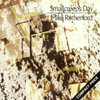
|
|
|
Almost everyone who enjoys music has some sort of core motivation for their individual tastes. There are those who are moved by lyrics and voice, others find pleasure in beats and samples. Many people look for some sort of emotional connection with, or gratification from, their chosen musics. Some are even moved by what they perceive to be musical intricacy or depth of composition. Then there are geeky puds like me……..
Confession time….I am a science fiction geek. It informs my personality in toto. I like stories, I like visions. When listening to music this writer hopes to see visions of worlds surreal, unimagined; infinite and without end. Profoundly alien or comforting, it matters not one bit to me. So, to that one person who actually might bother to read my blatherings about music….be prepared. Also, my thoughts concerning a given album or piece of music are chaotic; what is unabashedly praised today may provoke the mildest of shrugs tomorrow. Ditto my tastes. Moody? Oh yes (just ask my poor wife, heh heh).
Onwards! I promised a couple people that I would mostly be writing about Krautrock, with an occasional foray into other distant realms (e.g., Heldon and Richard Pinhas, Vocokesh, Nurse With Wound, Anna Själv Tredje, etc.). Some stuff to spice-up one’s daily prog diet, if you will. But what the hell, it’s Friday (Fredag) and all bets are off!
Recently, when digging through my musical archives an album caught my eye. It is an album whose music has been with me for almost thirty years
(twenty-seven, to be exact) and to this day resonates with something deep inside. It is Smallcreep’s Day by Mike Rutherford.
This album brings back such memories! It is one of three prog albums that were in the ‘play pile’ at the first record store I ever worked (the other two were Robert Fripp & The League of Gentlemen’s League of Gentlemen and Mike Oldfield’s QE2). It was a prog-obsessive period in my life, so the other three employees suffered greatly when they shared shifts with me. Not only because I only played the aforementioned album (along with the LoG and QE2), but also since I was the only prog-inclined employee. Believe it or not, several copies of Smallcreep’s Day were actually sold during my tenure at said establishment. Wonders never cease!
Anyway….so what do I think of Mr. Rutherford’s work in 2008? Depends. Depends upon which half of the album I get to choose……..yes, dear reader I am sure you already have it figured out……the “Smallcreep’s Day” suite is my fave. Just a story about a little guy working in a factory that one day gets curious. After years of endless laboring on a production line, our hero decides he wants to know what exactly is being produced. He wanders about the factory, seeing the mysterious sights for the whole of the day. Not that anyone could actually be away from their workstation wandering for an entire day….can you say ‘terminated’?....but this is fiction, so just roll with it. At the end of the day, our little Smallcreep finally gets to see the wonderful widgets
he helps to make (in his own insignificant way). And guess what? He is not impressed. Actually, he gets quite existential and mutters “Nothing matters at all.” He then returns home to his wife and family….all which truly matters to him. Awwwwww…. Supposedly, Rutherford based the lyrics on a book of the
same name by Peter Currell Brown (being republished in May 2008 by Pinter & Martin), but made the ending a wee bit more warm ‘n fuzzy. [Note: the storyline is also eerily similar in some ways to “The Belldog” by Eno, Moebius and Roedelius].
The music? Actually, pretty good. Very much like post-Gabriel Genesis, say Trick of the Tail or Wind and Wuthering, but without Steve Hackett’s wonderful guitar swoops and whirrings. Not quite as musically complex as Genesis either, but still satisfying nonetheless. And the vocals (by Noel McCalla) are an improvement on Phil Collins’ nasal whine. Yes, I am one of those people who find Phil’s voice a major irritant. If the little twit would just shut his pie-hole and play drums….which he does very, very well….the world and music of Genesis would be MUCH better off. Nuff said. Next to the solo oeuvres of Peter Gabriel and Steve Hackett, the “Smallcreep’s Day” suite is probably the most worthy listen to come from the solo activities of Genesis members. And yes, it is more interesting than Brand X too….except perhaps for the Brand X track “Cambodia” (from the album Do They Hurt? ).
What of the other half of Smallcreep’s Day, you say? Crap. Raw sewage, pure and simple. The tracks that comprise the rest of the album (e.g., “Moonshine”, “Time and Time Again”, “Romani”, “Every Road”, “Overnight Job”) are a horrifying presage of the utter mainstream trash that Mike & The Mechanics spewed forth. The five musical turds that end Smallcreep’s Day should be flushed immediately and quickly forgotten. The best that can be said about them is that they serve as a warning to prog listeners of what
Genesis would become. And we all have been traumatized by that aesthetic and musical disaster….except those who actually enjoy such pop poop.
For me, Smallcreep’s Day is the end of an era. It is the last really good ‘story’ to be heard from the Genesis fold. Although Banks, Collins, and Rutherford would on occasion return to storytelling (e.g., “Duke’s Travels/Duke’s End”, “House by the Sea”, etc.), it would never approach the scope last heard on Rutherford’s “Smallcreep’s Day” suite. And it is a shame because the music would never possess such magic or vision (even if it was borrowed from a book) ever again. If one considers the time period (1981), it is not so surprising that such ideas were passing. Prog was pretty much dead (do NOT mention Marillion to me) as a vital musical force or at least in a period of deep hibernation. Thank all ye gods and goddesses things eventually got better. There are still tales to be told.
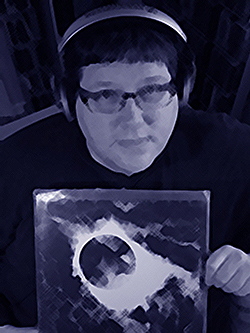
William
Frederick
II
|
|
|
|